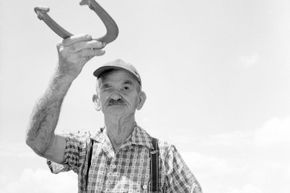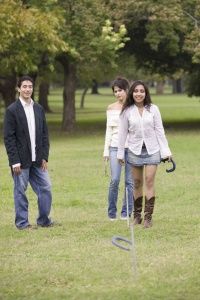Horseshoes may serve a certain function for a horse, but people tend to think of horseshoes as an item of superstition rather than sound footing. We hang them over doors for luck and fortune. We also like to throw them around, turning a piece of metal into a game of high stakes in backyards around the world.
The game of horseshoes is believed to date all the way back to the ancient Greeks, likely starting as a modified version of a game called quoits, which itself started as a modified version of Grecian discus throwing. Chariot-riding Romans are thought to also have been historical horseshoe players. Although the ancient Greeks may have been the ones to first play the game, it's now a lawn game enjoyed around the world, played in countries including Italy, Israel and South Africa. And it's thought that Americans have been playing since the days of the Revolutionary War, having caught on among soldiers before it invaded urban neighborhoods and suburban cul-de-sacs.
Advertisement
It's estimated that more than 15 million North Americans play horseshoes, casually at home as well as in organized leagues and tournaments across America and Canada [source: NHPA]. There are many expert ringers out there, probably more self-proclaimed than world-renown, but whether players play by the rules and regulations set by National Horseshoe Pitchers Association (NHPA) or the rules of their own backyard, you don't really need much to get a game going. It's really nothing more than shoes, stakes and a spot of level ground.
Let's review the basic rules and regulations of the game, just in case you find yourself in the pitcher's box.

